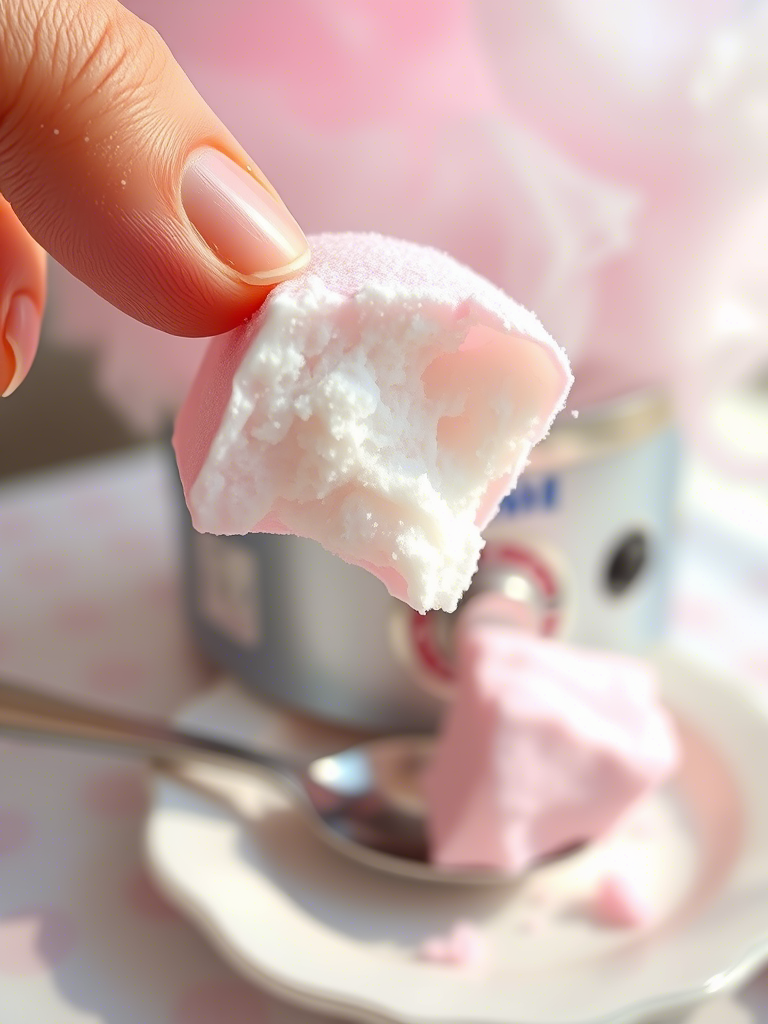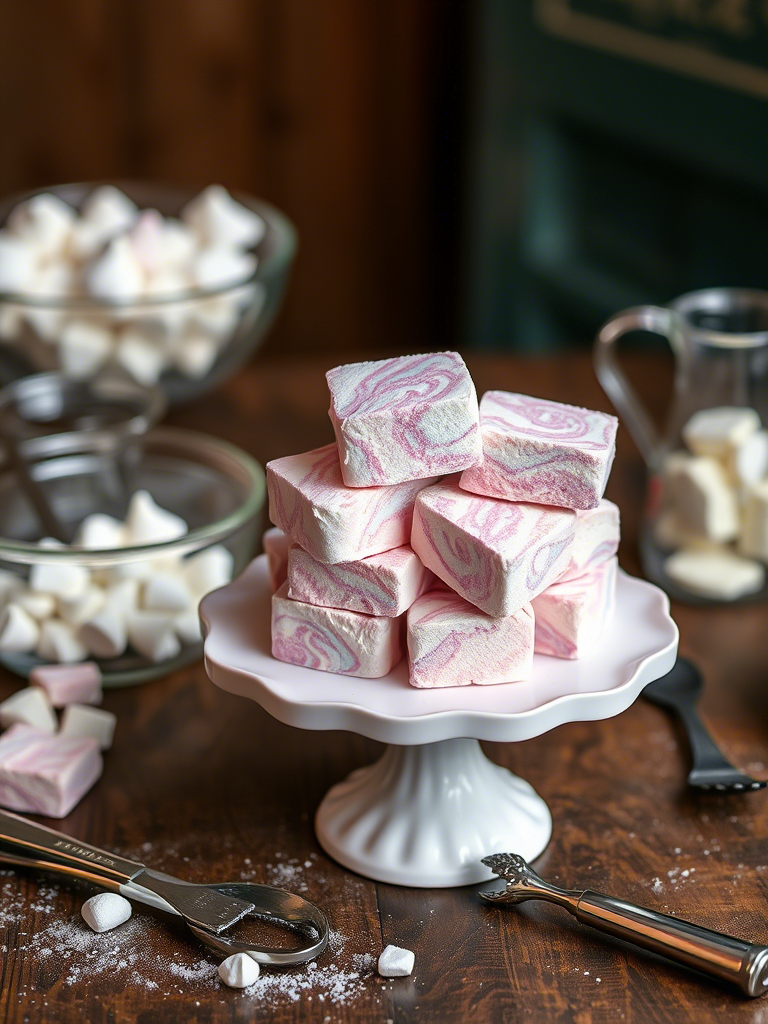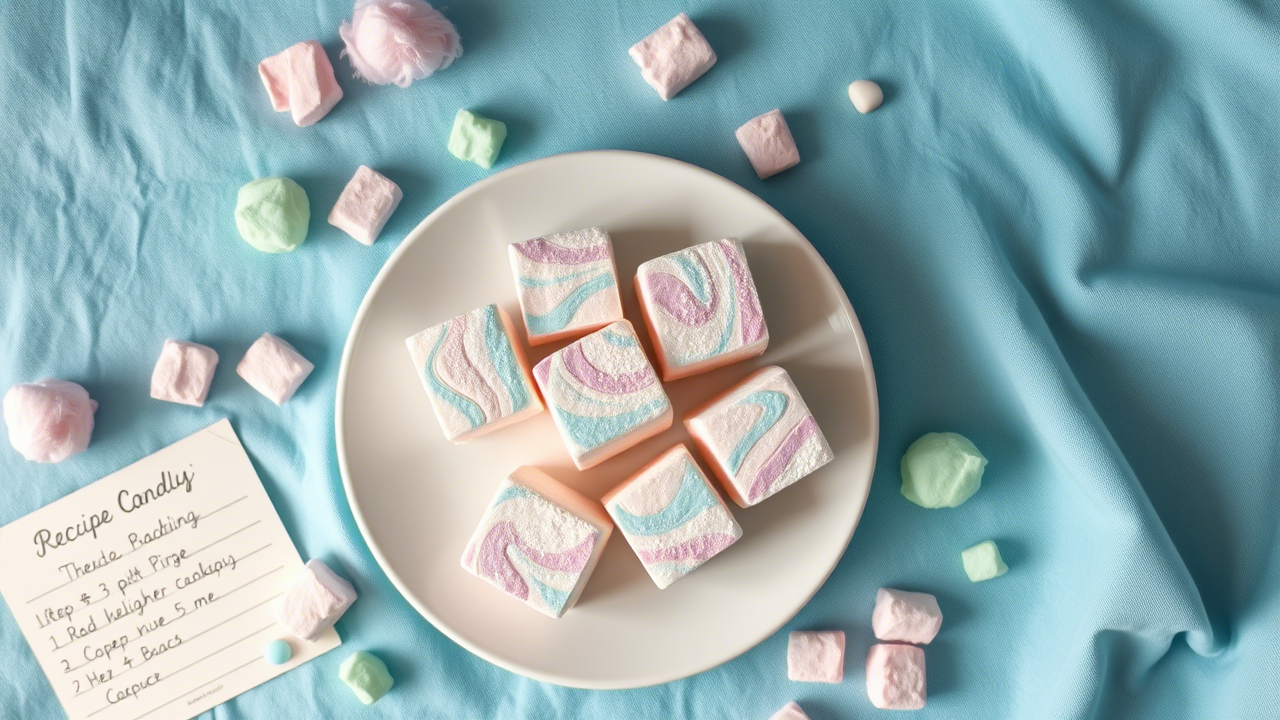Imagine this: the pillowy softness of a marshmallow meets the nostalgic, electric-sweet zing of cotton candy. It sounds like a carnival dream or the kind of dessert a child might describe when asked what magic tastes like. But cotton candy marshmallows aren’t just a novelty—they’re a technical challenge, a flavor innovation, and a visual delight all rolled into one sugary, cloudlike bite.
So why are these pastel-hued confections popping up in artisan sweet shops, upscale bakeries, and recipe blogs like wildfire? There’s more going on beneath that fluff than you’d think. In this deep dive, we’re peeling back the layers—texture, taste, chemistry, and craft—to show you why cotton candy marshmallows deserve a closer look by pros who take sweets seriously.
What Even Is a Cotton Candy Marshmallow?
Let’s clear one thing up fast: we’re not talking about spinning sugar around a stick. Cotton candy marshmallows are marshmallows infused with cotton candy flavoring—either through artificial extracts or by literally incorporating spun sugar into the mix. They’re typically dyed in soft pinks and baby blues, mimicking the colors you’d see at a fairground. And they’re light. Stupid light. Like “float off the plate if you sneeze” light.
But behind that whimsy lies a delicate structure held together by gelatin, sugar, and technique. The tiniest tweak in timing, temperature, or mixing speed and—poof—it’s all gone wrong.
Why Professionals Should Care About This Trend
You might think this is just a gimmick for Instagram. But listen: flavor innovation is one of the most powerful tools a chef or product developer has right now. A 2023 Mintel report showed that 72% of Gen Z consumers prefer nostalgic flavors when trying new foods. Cotton candy fits that bill to a T. Marry that with a well-crafted marshmallow (which, let’s be honest, still impresses when done right), and you’re looking at something that straddles novelty and culinary legitimacy.
Plus, marshmallows aren’t easy to make well. If you can master the cotton candy variety, you’ve probably got a rock-solid command of sugar work, emulsification, and aeration. It’s kind of like nailing a soufflé—only sweeter.
The Flavor Science of Cotton Candy
Cotton candy isn’t a singular flavor. It’s a combo of ethyl maltol, vanillin, strawberry furanone, and often a hint of blue raspberry. The result is a flavor that’s hard to pin down. Sweet? Definitely. Fruity? Sort of. Chemical? A little… but in the best way.
That complexity is what makes cotton candy a surprising star in the marshmallow world. Most marshmallows are vanilla-heavy. Maybe peppermint if it’s December. Adding cotton candy flavoring flips the script. You get notes that are light, fruity, slightly tangy—like the ghost of a Jolly Rancher wrapped in clouds.
To professionals in R&D kitchens, this opens up pairing opportunities: think cotton candy marshmallows in a raspberry s’more. Or floating in a soda-based cocktail. Or layered into a dessert board beside spun sugar and torched meringue.
Texture Is the Deal-Breaker
Let’s talk mouthfeel—because if this isn’t right, none of it works.
The hallmark of a well-made cotton candy marshmallow is air. Not too much, not too little. Over-whip your mallow base, and it turns chewy, maybe even gritty. Under-whip it, and it collapses into sticky goo the second it’s cut. The texture should be soft enough to sink your teeth into but with a slight resistance—like memory foam that barely pushes back.
And temperature is the silent killer here. If your sugar syrup is even five degrees too hot, the marshmallow will set firm and rubbery. Too cool, and it won’t aerate properly. 240°F (soft-ball stage) is your gold zone. A degree higher or lower can ruin a batch.
Most pros use a stand mixer with a whisk attachment for the whipping. But those who really want control? Some are switching to planetary mixers with programmable speed settings. Precision over chaos. That’s the game.
Color: Not Just for Pretty Pictures
Coloring plays a massive role, and it’s not just aesthetic fluff. Studies in food psychology (see: Spence, 2015) show that people experience flavor more intensely when it matches their visual expectations. A blue-tinged marshmallow tastes more “blue raspberry,” even if the flavor compound hasn’t changed. It’s all perception hacking, and you should absolutely be using it.
But beware: natural colorants don’t always behave well in sugar work. Beetroot turns brown. Spirulina reacts to heat. Synthetic colors? They hold up better but come with consumer hesitation. A workaround? Dust the marshmallows after they set using colored powdered sugars or edible mica dust. That way, you avoid color degradation during the cook.

Real-World Use: Beyond the Candy Bowl
Let’s say you’ve got your cotton candy marshmallow formula dialed. Now what?
Here’s where the creativity kicks in:
- S’mores with Attitude: Use graham cracker to sandwich a cotton candy marshmallow and dark chocolate ganache. It’s nostalgia wrapped in surprise.
- Garnish for Craft Cocktails: Light a cotton candy marshmallow over a drink like a flaming marshmallow cube. Insta-worthy and a conversation starter.
- Layered into Cakes: Freeze them, slice them thin, and press into the frosting layer of a birthday cake. The sugar softens just slightly from the ambient moisture, making them melt-in-your-mouth.
- Hot Chocolate Bombs: Fill cocoa bombs with cotton candy marshmallows instead of regular ones. When the bomb bursts, it smells like a summer fair.
- Gift-Box Value Add: Add a pack of cotton candy marshmallows to gift sets during holiday seasons. They stand out more than regular candies and can hold a higher price point.
Troubleshooting: Common Pitfalls and Fixes
Even experienced chefs mess up marshmallows. Cotton candy makes it trickier.
- Issue: Marshmallows come out too sticky.
Cause: Humidity or undercooked syrup.
Fix: Work in a low-humidity environment and calibrate your thermometer before each batch. - Issue: The flavor tastes off or flat.
Cause: Overheating flavor extracts or using low-quality ones.
Fix: Add flavoring after the mixture cools slightly but before whipping. Use flavor oils, not water-based extracts. - Issue: They don’t set properly.
Cause: Blooming the gelatin incorrectly or rushing the pour.
Fix: Bloom gelatin in cold water, not warm. And fold quickly but carefully when combining sugar syrup.
Trends & What’s Next
Keep an eye on where this is going. Flavored marshmallows are just starting to trend upward again, especially in Asia and the indie baking scene in the U.S. Korea has released cotton candy-flavored snacks in 7-Eleven chains. TikTok is full of cotton candy marshmallow recipes being torched, dipped, and frozen. This isn’t going away. It’s growing up.
There’s also a growing push for vegan marshmallows using agar or carrageenan instead of gelatin. But cotton candy flavor complicates that—it often uses emulsifiers or carriers that don’t play well with plant-based gelling agents. It’s a problem worth solving, though, especially with 22% of millennials identifying as flexitarian or vegetarian in North America.
Expert Tip: Use Freeze-Dried Cotton Candy Powder
Here’s one for the pros: if you can get your hands on a freeze-dried cotton candy powder, use that instead of extract. It holds flavor better under heat, adds a hint of natural sweetness, and gives a faintly crunchy texture when you leave bits unincorporated. It’s not widely available, but some specialty suppliers offer it in micro-batch sizes.

Conclusion: Sugar, Air, Memory, and Magic
Cotton candy marshmallows aren’t just fluff. They’re a masterclass in sugar science, a nod to childhood, and a canvas for creative expression. Whether you’re working in a fine dining kitchen, developing CPG desserts, or running a boutique bakery—this trend has legs. But it rewards skill, not shortcuts.
So if you’re chasing the next dessert that balances whimsy with technical challenge, this is it. Just make sure you’ve got a steady hand, a calibrated thermometer, and maybe a tiny bit of your inner child still intact. Because at the end of the day, the best confections aren’t just about flavor—they’re about feeling.
Now go whip some sugar into clouds, and maybe—just maybe—make someone’s day a little sweeter.
FAQs
What are cotton candy marshmallows?
Cotton candy marshmallows are soft, fluffy confections flavored with cotton candy essence and often colored in pastel pinks and blues.
Do cotton candy marshmallows actually contain real cotton candy?
Not usually—they’re typically made with cotton candy flavoring or extract, not spun sugar.
What makes the texture of cotton candy marshmallows different?
They’re ultra-light and airy with a melt-in-your-mouth texture, achieved by precise whipping and sugar temperature control.
Can I use natural food coloring for cotton candy marshmallows?
You can, but natural colors often degrade with heat or change color in sugar-based recipes.
Are these marshmallows suitable for vegans?
Traditional ones aren’t, but plant-based versions using agar or carrageenan are being developed.
What’s the ideal temperature for the sugar syrup?
240°F (soft-ball stage) is ideal for fluffy, properly set marshmallows.
Why does my marshmallow batch come out sticky?
It’s likely due to high humidity or undercooked sugar syrup.
When should I add cotton candy flavoring?
After the syrup cools slightly but before you whip it to retain the flavor strength.
Can I use these marshmallows in hot drinks or s’mores?
Absolutely—they melt beautifully and add a fun, nostalgic twist.
Where can I get cotton candy flavoring?
Available online or at specialty baking stores in both extract and oil forms.
How long do cotton candy marshmallows stay fresh?
About 2–3 weeks in an airtight container, depending on humidity.
Can I freeze cotton candy marshmallows?
Yes, but let them come to room temp before eating to avoid condensation and texture loss.
What’s the best use for cotton candy marshmallows professionally?
They’re perfect for upscale dessert garnishes, gift boxes, or unique bakery offerings.
Do cotton candy marshmallows appeal to a specific age group?
They’re especially popular with Gen Z and millennials who love nostalgic, whimsical flavors.
How can I boost the flavor naturally?
Try using freeze-dried cotton candy powder for a more concentrated, heat-stable flavor.

Mariana is a passionate home cook who creates delicious, easy-to-follow recipes for busy people. From energizing breakfasts to satisfying dinners and indulgent desserts, her dishes are designed to fuel both your body and hustle.
When she’s not in the kitchen, she’s exploring new flavors and dreaming up her next recipe to share with the Foodie Hustle community.

